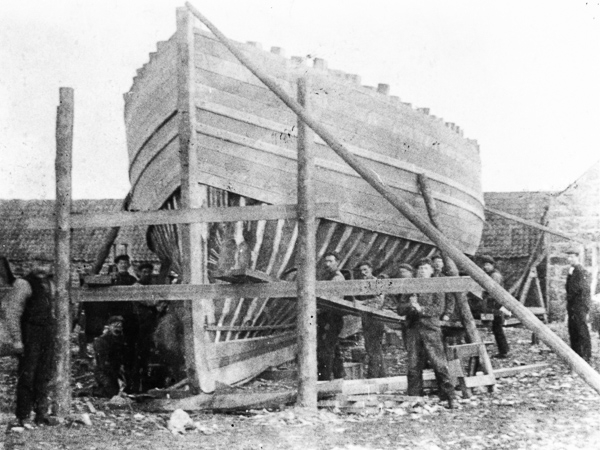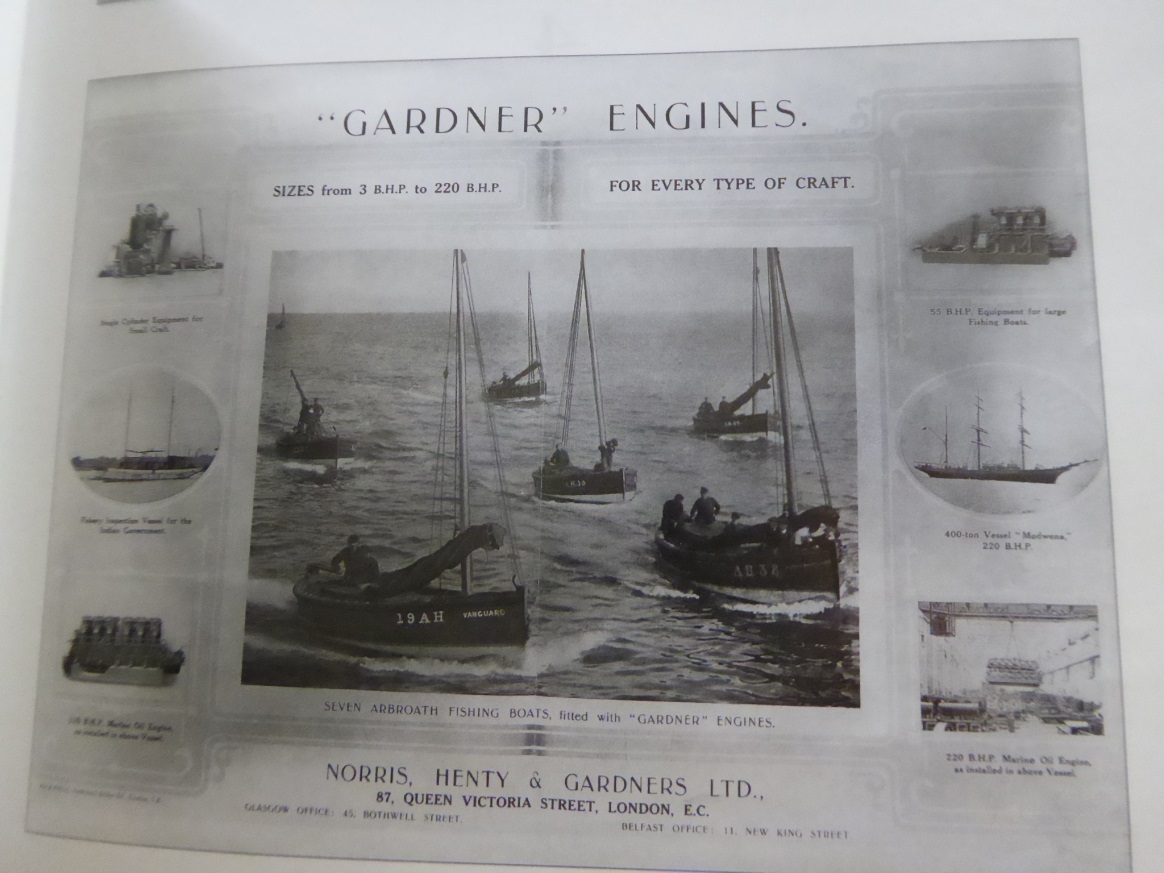Reaper
Delivering the goods
REAPER was launched in 1903 at the Forbes Boatyard in Sandhaven near Fraserburgh, but was moved to Lerwick in Shetland where she was registered in 1908. She is a Fifie sailing herring drifter and her story during the First World War illustrates the vital role played by the fishing fleet at this time. With many farm workers taken off the land to join the army, fish constituted a substantial part of the nation’s diet. In the 11 months from 1 January 1916 the total quantity and value of fish recorded as landed by the Fishery Board for Scotland was 3,248,112 hundredweight worth £2,927,403. Herring alone accounted for over 2 million hundredweight, or 100,000 tons. REAPER was very successful in the summer herring fishing.

The weekly catches were reported in The Fishing News. For the week ending 16 September 1916 the Lerwick fleet was well fished with an average catch of 20 crans. The cran was a unit of measure of landed uncleaned herring used in the North Sea fishing industry. A standard box of about 37.5 gallons typically contained around 1200 fish, varying between 700 and 2,500. On the Saturday REAPER, along with LIZZIE MAY, had the highest catch at 16 crans.
During the First World War fishing was banned or controlled in many parts of the country because of the danger of enemy action. In Shetland the movement of boats was restricted to daylight hours, which meant that fishing boats like REAPER had to leave for the fishing grounds at first light and be back in harbour before dusk. This was difficult for sailing boats that relied on the frequently unpredictable winds, and led to the installation of engines throughout the fleet. REAPER was no exception.
In 1916 REAPER she was fitted with a Gardner 4KM engine. This was a four stroke engine producing 75bhp running on paraffin with lamp heated vapourisers. This allowed her remove her smack rig whilst retaining her small mizzen as a steadying sail while drifting at the nets. Gardner engines were heavily advertised in the fishing press at the time. One advertisement showed seven Arbroath fishing boats all fitted with Gardner engines.

The rapid turnaround of the fishing boats was a vast logistical operation. A report in September 1916 describes a presentation at Lerwick Fish Market at which Skipper Lawrence Williamson of the REAPER presented, on behalf of the fish trade, a gold watch and albert to Mr Mackenzie, Chief Officer for Fisheries for Shetland and his assistant Mr Riddle. Lawrence referred to the ‘splendid services rendered by both gentlemen in the interests of the fishing industry during the past two years’. They had had meetings almost daily with the skippers, whose courses and the ground to be fished had to be given.
Both fishermen and their boats were a vital national resource during the war. By April 1915 1,500 trawlers (about half the entire fleet) and 1,500 drifters were requisitioned by the Admiralty. Whilst some fishermen were allowed to fish unprotected for essential food, some fishing boats were armed so that they could defend themselves if needed, and many fishermen were recruited formally into the Navy Reserve.
Fishing during the First World War was an extremely hazardous business. In all, some 394 British fishing boats on war service, and 675 non-combatant fishing boats, were sunk in the war. A total of 434 fishermen lost their lives.
Where is she now?
After a period serving as a general cargo boat under the name of SHETLANDER, REAPER was purchased in 1975 by the Scottish Fisheries Museum where she was restored to her original 1902 rig and renamed REAPER FR 958. As the last surviving First Class sailing lugger of the Fifie type she is now the Museum’s flagship afloat.
Sources
McAslan, Rodger (2016) Reaper FR958: Fifie Lugsail Herring Drifter, Anstruther, Fife: St Ayles Press.
The Fishing News, 2 January 1914, 16 September 1916, 16 December 1916.
Brown, Paul (2013) Reaper, in Historic Sail, The History Press.
Library, Scottish Fisheries Museum, Anstruther, Fife, Scotland KY10 3AB.
